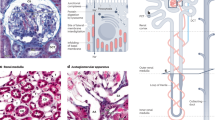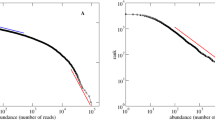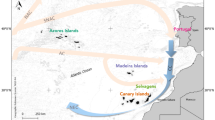Abstract
Forty years ago a suggestion was made (Bunge)1 that the sodium chloride in the human tissues might be a relic, an inherited feature of some aquatic marine ancestor. The same idea was expressed in certain papers by Quinton,2 who stated that so far as salinity is concerned the blood of most animals is an altered sea water. In 1903,3 Macallum, then unaware of the suggestions of Bunge and Quinton, advanced the theory “that the blood plasma of vertebrates and invertebrates with a closed circulatory system is, in its inorganic salts, but a reproduction of the sea water of the remote geological period in which the prototypic representative of such animal forms first made their appearance”. He regarded the differences between the blood salinity of the higher vertebrates and the present-day ocean as due to changes in the composition of the sea water since palæozoic or mesozoic times. Macallum followed up his first statement by more detailed papers, and made some valuable analyses of blood to support his thesis. He is now generally credited with being the originator of this interesting conception. In 1912 I discussed the matter4 from the point of view of certain experiments and observations on marine and fresh-water invertebrates, and came to the conclusion that whilst one might accept the well-regulated saline composition of the blood of teleost fishes, amphibia, and the higher groups as being to a certain extent an heirloom of an ocean environment, there was no reason whatever to believe that the favoured salinity associated with independence represented the composition of any particular primeval ocean. At that time I stated that the investigations of osmotic regulation did not preclude the idea that the early vertebrates with an independence in blood salinity had evolved in fresh water.
This is a preview of subscription content, access via your institution
Access options
Subscribe to this journal
Receive 51 print issues and online access
$199.00 per year
only $3.90 per issue
Buy this article
- Purchase on Springer Link
- Instant access to full article PDF
Prices may be subject to local taxes which are calculated during checkout
Similar content being viewed by others
References
Bunge, "Lehrbuch der physiologischen und pathologiachen Chemie". Leipzig, 1889.
Quinton, "L'eau de mer, milieu organique". XIIIe Congrès intern. de Méd. de Paris. Paris: Masson, 1900.
Macallum, "Palæochemistry of the Ocean", Trans. Canad. Inst., 1904.
Dakin, William J., "Aquatic Animals and the Constitution of the External Medium", Internat. Revue d. ges. Hydrobiologie. Leipzig, 1912.
Author information
Authors and Affiliations
Rights and permissions
About this article
Cite this article
DAKIN, W. The Composition of the Blood of Aquatic Animals and its Bearings upon the Possible Conditions of Origin of the Vertebrates. Nature 128, 66–67 (1931). https://doi.org/10.1038/128066b0
Issue Date:
DOI: https://doi.org/10.1038/128066b0
Comments
By submitting a comment you agree to abide by our Terms and Community Guidelines. If you find something abusive or that does not comply with our terms or guidelines please flag it as inappropriate.



